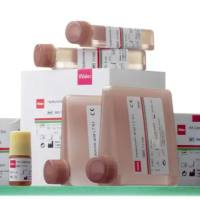Virus-induced gene silencing (VIGS) provides an attractive tool for high-throughput analysis of the functional effects of gene knockdown. Virus genomes are engineered to include fragments of target host genes, and the infected plant recognizes and silences the target genes as part of its viral defense mechanism. The consequences of gene inactivation, even of key metabolic, regulatory, or embryo-lethal genes, can thus be readily analyzed. A number of viral vectors have been developed for VIGS; one of the most frequently employed is based on tobacco rattle virus (TRV) due to its wide host range, efficiency, ease of application, and limited disease symptoms. TRV-based VIGS comprises two vectors. One (RNA2) includes a multiple cloning site into which fragments of target genes can be inserted. We have shown that the TRV/VIGS system can simultaneously silence as many as five independent genes. TRV is a mosaic-type virus, and silencing also occurs in a mosaic pattern. It is therefore desirable to have a reporter that can show where target genes have been silenced. The photobleaching induced by silencing phytoene desaturase (PDS) and the loss of purple pigmentation induced by silencing chalcone synthase (CHS) have successfully been used to indicate the location of coordinate silencing of other target genes. In this chapter, we outline our protocols for the use of VIGS for analysis of gene function, focusing particularly on the use of TRV with petunia and tomato.






